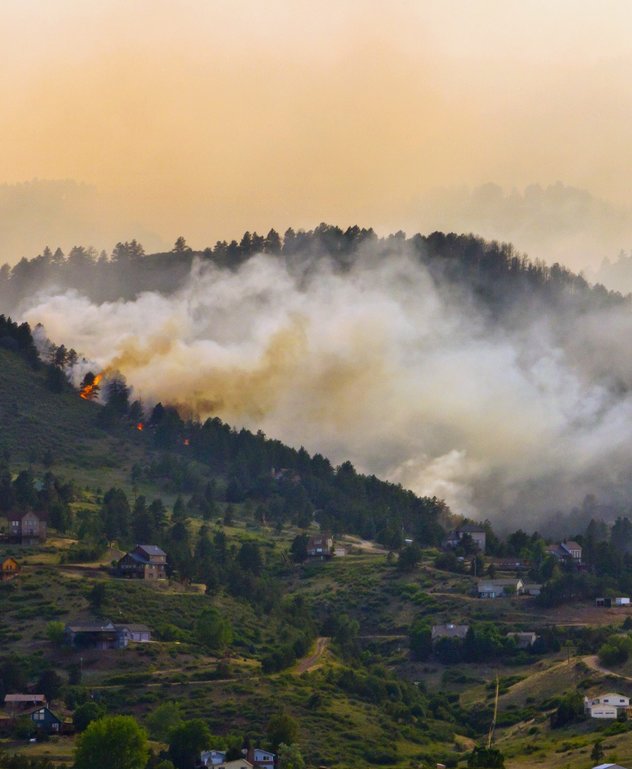
Will Your Home Survive a Wildfire?
Even if they are natural processes essential for healthy forests, wildfires nonetheless remain very frightening and damaging for any communities in their immediate reach.
Each year, wildfires cause, on average, about 20,000 km2 of Canadian forests to burn, and with the risk projected to increase in many parts of Canada, affected homeowners need to take as many preventative measures as possible against loss, damage or injury.
The Institute for Catastrophic Loss Reduction, in conjunction with the Government of Alberta, has created a set of economical steps termed “FireSmart Principles” that can guide you in protecting your home against wildfire risk. In following with these guidelines, the first step is to visualize your property as being composed of three different “zones” of priority.
Priority Zone 1 is the 10-meter space immediately surrounding your home and is critical to fire prevention for the buffer space it gives firefighters. The zone must be cleared, free of fuel, and must not contain any kind of vegetation or flammable trees and shrubs, such as pine, spruce, and juniper since all vegetation can catch fire very quickly.
Priority Zone 2 is the area extending 10 to 30 meters away from your home. Any trees, debris, tree branches less than 2 meters from the ground, thick shrubbery, and deadfall that would support the rapid spread of a wildfire must be removed from this zone.
Priority Zone 3 starts 30 meters from your home and extends to a distance of 100 meters and beyond. In this zone, the aim is less to remove combustible materials and more to thin out any trees or shrubs to create lower intensity, easily extinguishable fires. Try planting fire-resistant trees, such as aspen, poplar, and birch, while spacing out more flammable trees about 3 to 6 meters apart. Make sure to maintain these FireSmart Priority Zones in order to maximize your protection against fires.
Buildings that are currently being erected also can be equipped with FireSmart techniques to prevent damage. Construct roofs using fire-resistant materials, such as metal, clay tile, and asphalt shingles. Avoid untreated wooden shakes and shingles as these provide no resistance and advance wildfire very quickly. Remove any combustible leaves, overhanging trees and/or branches from your roof.
Build exterior walls with the material such as stucco, metal, brick, and concrete, which offer excellent resistance to wildfire compared to logs, heavy timber, wood, and vinyl. Exteriors of homes should have siding built to be fire resistant from ground level to the roofline and close in any eaves, vents, and soffits that will easily let in heat. Erect windows with tempered, smaller pane materials rather than single pane glass.
Lastly, don’t end up being the cause of a wildfire by ensuring your chimneys meet current building code requirements and by keeping burn barrels and fire pits away from buildings and 3 meters away from other combustible materials. Vegetation must be kept away from power lines and propane tanks. Your property must have adequate emergency vehicle access and an onsite emergency water supply. Have your on-site fire tools, such as shovels, sprinklers and garden hoses, ready if they are needed to help suppress a wildfire.
50% of Canadian wildfires are caused by humans – so following these steps not only protects your home, but decreases an incredible amount of future risk for your neighbors, loved ones, and immediate community. Be FireSmart and protect your home.